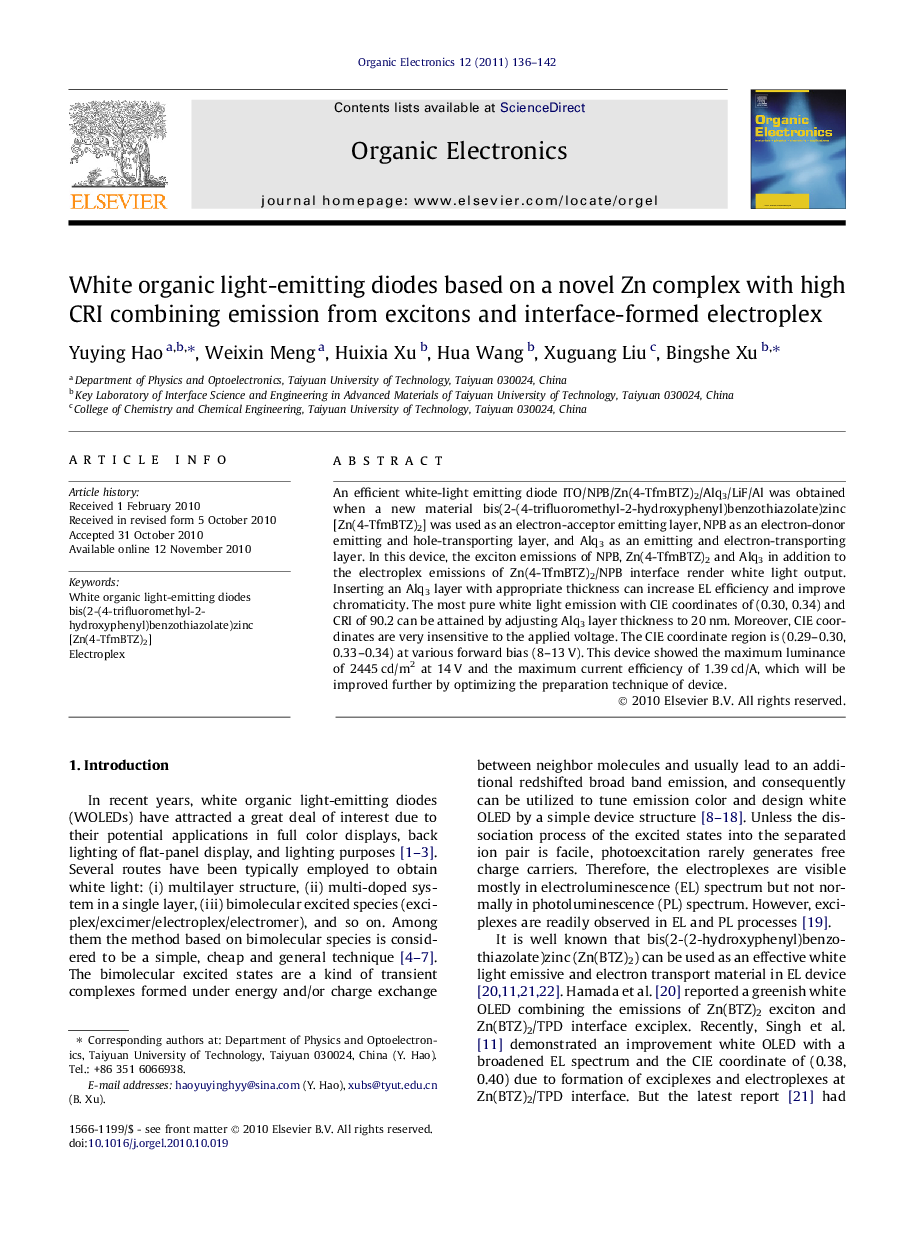| Article ID | Journal | Published Year | Pages | File Type |
|---|---|---|---|---|
| 1267736 | Organic Electronics | 2011 | 7 Pages |
An efficient white-light emitting diode ITO/NPB/Zn(4-TfmBTZ)2/Alq3/LiF/Al was obtained when a new material bis(2-(4-trifluoromethyl-2-hydroxyphenyl)benzothiazolate)zinc [Zn(4-TfmBTZ)2] was used as an electron-acceptor emitting layer, NPB as an electron-donor emitting and hole-transporting layer, and Alq3 as an emitting and electron-transporting layer. In this device, the exciton emissions of NPB, Zn(4-TfmBTZ)2 and Alq3 in addition to the electroplex emissions of Zn(4-TfmBTZ)2/NPB interface render white light output. Inserting an Alq3 layer with appropriate thickness can increase EL efficiency and improve chromaticity. The most pure white light emission with CIE coordinates of (0.30, 0.34) and CRI of 90.2 can be attained by adjusting Alq3 layer thickness to 20 nm. Moreover, CIE coordinates are very insensitive to the applied voltage. The CIE coordinate region is (0.29–0.30, 0.33–0.34) at various forward bias (8–13 V). This device showed the maximum luminance of 2445 cd/m2 at 14 V and the maximum current efficiency of 1.39 cd/A, which will be improved further by optimizing the preparation technique of device.
Graphical abstractFigure optionsDownload full-size imageDownload as PowerPoint slideResearch highlights► The electroplexes form at NPB/Zn(4-TfmBTZ)2 interface. ► The combining emission of excitons and electroplexes render white light output. ► EL efficiency and chromaticity of device are dramatically controlled by thickness of Alq3 layer. ► The idea white light emission can be attained by adjusting Alq3 thickness to 20 nm.
